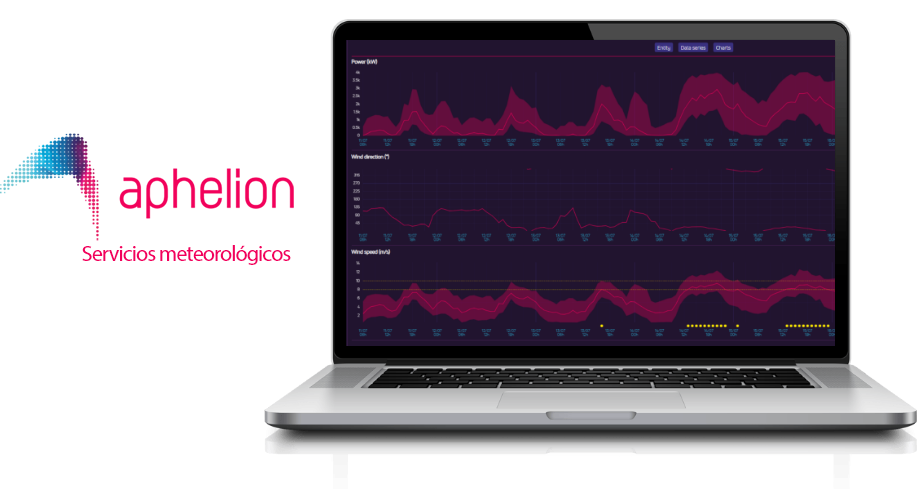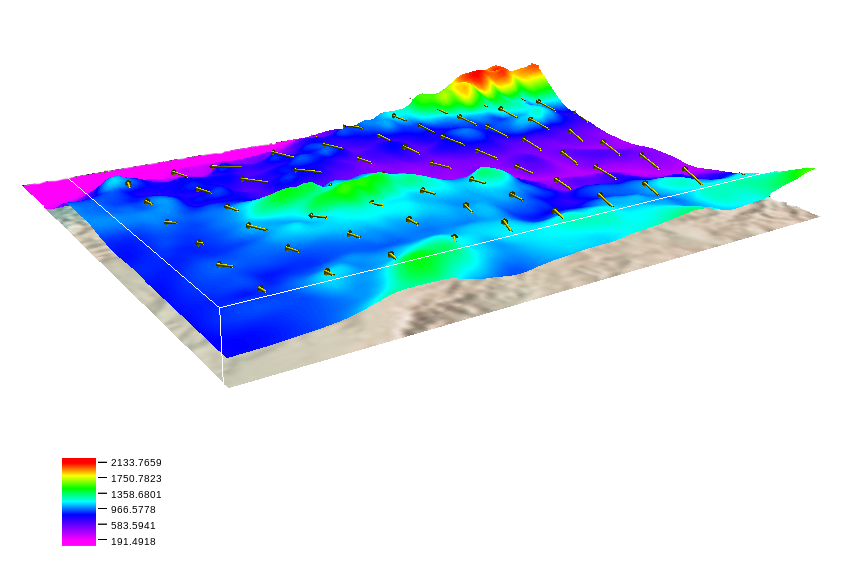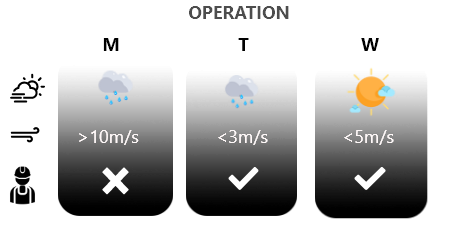Energy and weather forecast for renewable operators
BACKGROUND
Through the use of an extensive NWP (Numerical Weather Prediction) database and forecast corrections using artificial intelligence algorithms, various energy and weather forecast services are offered. Likewise, at SOLUTE we develop training plans for our customers to ensure they can properly interpret the forecast, thus maximising the performance that can be achieved by the users.
Within the framework of its R&D&I initiatives, SOLUTE has designed and optimised an energy and weather forecast service adapted to the needs of renewable plant operators. Among the tools that are implemented, energy load forecast algorithms for intraday, day-ahead and balancing markets are worth mentioning, as they provide valuable information for optimising energy sales strategies.
Likewise, to complete the service, SOLUTE has weather models and post-processed information available so that operators can programme their routine O&M tasks at the wind park. With the aim of improving accessibility, we have maximised the number of formats in which this information is available: email, FTP and via web interface and App.
RESULTS
The weather forecasts services that are built have two main features: on the one hand, the ability to forecast, which is competitive compared to other solutions, and, on the other hand, the stability of the service, which guarantees availability above 97%.
Likewise, a technical advice service is offered for a proper interpretation of the forecasts.
OTHER USES AND APPLICATIONS
The service is designed to optimise decisions during the service life of the renewable plant. On the other hand, its worthiness is analysed during the construction phase in order to programme tasks and for hypothetical production exercises.
EXPERIENCE
Since 2015, SOLUTE uses artificial intelligence systems to provide energy forecasts to different wind park operators. These customers normally request hourly forecasts for the intraday and day-ahead markets as well as potential scenarios +7 days ahead. Two levels of forecast are possible; at the park level (available production, wind forecast, etc.) and at the turbine level (for a greater level of detail). In order to adapt to the needs of each operator, the forecast team carries out an optimisation of the algorithms based on the main KPIs (NMAE, R2, RMSE, BIAS and IEV).
Each forecast tool is built to maximise the ability of the forecast, carefully selecting the data that is used during its configuration (NWP, satellite imagery, Met Mast, SCADA, WRF Aphelion…), its scope is defined by the customer's request and entails, in addition to training on the forecast models, its automation and final frontend design of the tool.
METHODOLOGY
Regarding the structuring of the works, the tasks are organised by tools. Each forecast tool is built to maximise the ability of the forecast, carefully selecting the data that is used during its configuration (NWP, satellite imagery, Met Mast, SCADA, WRF Aphelion…), its scope is defined by the customer's request and entails, in addition to training on the forecast models, its automation and final frontend design of the tool.
The main features of the system are:
Availability. Customer independence is one of our greatest strengths. Thanks to the Aphelion Wind forecast tool we can include a new forecast asset (Wind Park, photovoltaic plant, etc.) at any time of the day, being able to choose between different energy and weather forecast products.
Adaptability. The specific technical capabilities of the team in charge of the forecast services enable us to meet the particular needs of different types of customers. Forecast for the control of the plant or the detection of ramp events are carefully handled at independent projects.
Transparency. SOLUTE is committed to continuously communicate to its customers, the ability of its forecast models. Periodic validation reports recover the critical KPIs of each forecast service and present them in a simple and useful manner.
Continuous growth. Including algorithms, strategies and new weather models ensures the ability of the models is continuously improved.
Conservative system. The inclusion of a new forecast model requires the algorithm pass a series of quality controls (ability, scalability, reproducibility) in order to form part of the set of available models within the automatic forecast issuance system.
Technical team. SOLUTE has a structured technical team of weather forecasters and data scientists as well as software developers and web platforms. This concept effectively combines techniques called Dynamical Downscaling and Statistical Downscaling, which, in the long term, are used to achieve improvements in both worlds: better weather inputs and local corrections of the forecasts using artificial intelligence (IA) models.
A type of project. The first step to carry out is to understand the customer's needs; all models are not used for the same purpose nor are they built in the same way. Then, the data supplied by the customer is cleaned and filtered for the purpose of obtaining an accurate picture of the weather conditions in the area. At the same time, an inventory is made of all sensitive data in order to optimise the models. Then, the automatic training phase begins of the five IA model architectures that are used by SOLUTE, evaluating the ability of each of them for the target location and composing the uncertainty of each one of the models based on percentiles (P90, P75, P50, P25 and P10). Once the model with the best KPIs is selected, we proceed with setting it up.
The delivery of the forecasts is made in accordance with the customer's specifications.
Automotive
Pedestrians´ protection
CAE development of a car body to optimise its design to avoid or minimise pedestrian injury in a potential collision.
Software
Frontend
Frontend is the study of the components for creating, managing, maintaining and testing IT software, which can be defined as the logic programming required by all information systems to operate properly and provide the user with a practical and intuitive interface that enables them to use an application.


